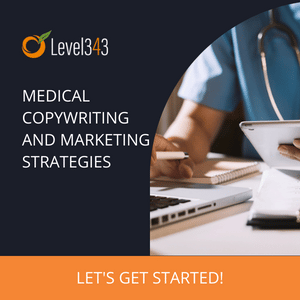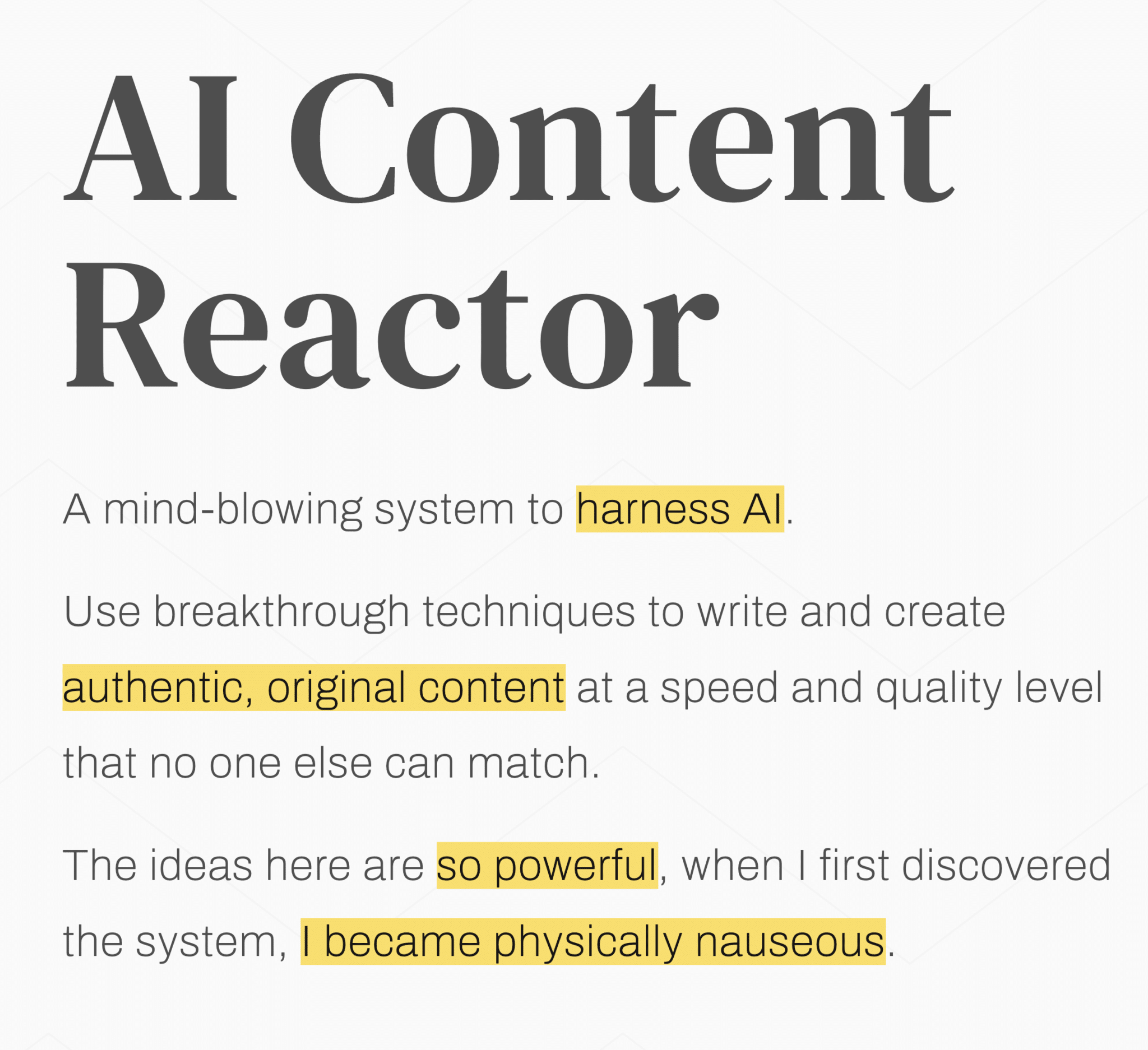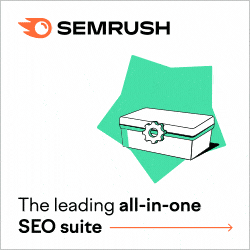Online or digital marketing uses the internet to promote your brand, products, or services with strategies like SEO, content marketing, social media, and email campaigns. This digital marketing guide breaks down the basics of online marketing into actionable steps to help you understand what works, how to get started, and how to improve results over time.
Online marketing is a vast and multifaceted field encompassing numerous methods, strategies, and channels. However, it can be challenging to determine what direction you should be taking without expertise. Read on to learn digital marketing basics and proven strategies you can use for better results.
Editor’s Note: Originally published in 2017, this article has been updated to reflect the current state of digital marketing.
Table of contents
- There are six key digital marketing categories.
- Search engine optimization targets your website.
- Content marketing supports the visitor after the search.
- Social media marketing lets you directly interact with your audience.
- Email marketing helps you nurture relationships and drive conversions.
- Influencer marketing builds trust through third-party voices.
- Online advertising puts your brand in front of the right people, fast.
- Let’s put all this digital marketing goodness to work.
- Final Thoughts
There are six key digital marketing categories.
Before diving into your first (or next) campaign, it helps to get familiar with the digital marketing landscape. It may feel overwhelming at first, but most strategies fall into six key categories.
Understanding these core avenues makes it easier to build campaigns that work together to attract, engage, and convert your ideal audience.
- Search Engine Optimization (SEO)
- Content Marketing
- Social Media Marketing
- Email Marketing
- Online Advertising (includes PPC, display, and programmatic)
- Influencer Marketing
Search engine optimization targets your website.
SEO focuses on improving the visibility and performance of your website in the search engine results pages (SERPs). While the primary goal has traditionally been to rank organically on platforms like Google, modern SEO also includes optimizing for features like AI Overviews, featured snippets, and voice search.
SEO is essential for capturing users who are actively searching for solutions, products, or services. Key elements include:
- Keyword Research: Keyword research is still the foundation of any SEO strategy, even when ranking isn’t always the top goal. Keyword research helps you find out what terms and phrases your audience is actually searching for. With this information, you can align your content with user intent and increase the chances of showing up for terms that resonate with the searcher’s goals.
- On-page SEO: On-page SEO involves optimizing elements on your website, including meta titles, descriptions, headers, and the content itself. Proper structure, keyword usage, and internal linking help search engines understand what your pages are about and how they relate to one another.
- Off-page SEO: Off-page SEO involves the actions taken outside your website to impact your rankings. The primary action is link-building. Earning high-quality backlinks from trusted websites signals authority and helps improve your position in search results.
- Technical SEO: Technical focuses on site performance and usability. Key areas include site speed, mobile responsiveness, secure HTTPS protocols, structured data (schema), and proper indexing. These factors provide search engines with an easily crawled site, which helps your content to rank better.
- Local SEO: Aimed at increasing visibility in local search results, Local SEO involves optimizing your Google Business Profile, managing reviews, using location-based keywords, and ensuring accurate business listings across online directories. It’s essential for brick-and-mortar businesses or service providers targeting a geographic area.
- AI and Featured Snippets Optimization: Modern SEO includes formatting your content to appear in featured snippets, People Also Ask boxes, and AI-generated overviews. This involves using clear headings, concise answers to common questions, structured data, and formatting content to match search engine preferences for extractable summaries.
Content marketing supports the visitor after the search.
Content marketing involves creating and distributing content, whether it’s on your site or somewhere else. The goal is to engage their interest and provide valuable, relevant information at the right time (and place) in the customer journey.
You do this by offering consistent, high-quality content such as:
- Blog Posts: These are informative articles that answer common questions from your audience. When written with buyer intent in mind, blog posts guide readers through early research stages and establish your brand as a helpful authority.
- Videos: Videos can be used throughout the marketing funnel. At the top, they might address pain points or raise awareness. In the middle, product demos or explainer videos support consideration. After purchase, how-to videos and onboarding content help educate and retain customers. Visual content with real people builds trust and improves recall.
- Infographics: Infographics turn complex information into an easy-to-understand visual format. They’re ideal for simplifying statistics, processes, or comparisons, which makes them perfect for social sharing or supplementing blog posts.
- eBooks and Whitepapers: These long-form content pieces provide in-depth information, research, or guidance on a topic. They’re often gated behind lead capture forms, making them useful for generating qualified leads and positioning your brand as an expert resource.
- Case Studies: Case studies are real-world success stories that show how a product or service solves a problem. These are especially effective for prospects in the consideration or decision phase who want to see proof of results. If you’re under NDA, you can anonymize the case study and not mention the client. One option we’ve used is to analyze a site we aren’t affiliated with (e.g., using Amazon to showcase how social proof is done)
- Templates, Checklists, and Worksheets: These practical tools offer immediate value and usability. This makes them strong lead magnets or companion pieces to blog posts, ebooks, and guides.
When it’s used effectively, content marketing attracts visitors to the site and then nurtures them through the sales funnel by addressing their needs and building credibility.
Social media marketing lets you directly interact with your audience.
Social media platforms help you connect with your specific audience in real time, raise brand awareness, drive traffic and engagement, build relationships, and encourage loyalty. Since people spend significant time on platforms like Facebook, Instagram, LinkedIn, TikTok, and X (formerly Twitter), social media is a powerful tool .
- Organic Posts: Share updates, behind-the-scenes content, photos, videos, and helpful tips to keep an active and authentic online presence. Consistency helps reinforce your brand voice and keeps you top-of-mind.
- Paid Advertising: Use highly targeted social ads to reach specific segments of your audience. You can build these segments based on user interests, behaviors, job titles, and locations. These campaigns are ideal for boosting visibility, promoting content, or generating leads quickly.
- Community Engagement: Social media is a two-way street. When you respond to comments, join conversations, and encourage user-generated content (UCG), you help build trust and community around your brand.
- Stories and Reels: Short-form video content is favored by many platforms and audiences, and is especially useful on Instagram and TikTok. Stories and Reels are great for showcasing product highlights, answering quick questions, or offering limited-time promotions in a visually engaging format.
- Influencer Collaborations: Partnering with niche influencers or brand advocates on social platforms can expand your reach and add credibility. Influencers can introduce your brand to their audience in a way that feels personal and trustworthy.
- Platform-Specific Strategies: Tailor your approach to each channel. For example, use hashtags strategically on Instagram, join relevant conversations on X, publish thought leadership on LinkedIn, and create trend-aware content for TikTok.
Email marketing helps you nurture relationships and drive conversions.
Email marketing remains one of the most cost effective ways to engage with leads, customers, and subscribers on a personal level. You can deliver targeted, personalized messages directly to your audience’s inbox, helping you build trust, increase retention, and guide users through the sales funnel.
Key components of a strong email marketing strategy include:
- Welcome Emails: A good welcome sequence sets expectations, introduces new subscribers to your brand, set expectations, and often includes a special offer or helpful resources to encourage engagement.
- Promotional Campaigns: You can send special offers, discounts, product announcements, or seasonal promotions to your email list. These emails generate immediate interest and drive sales.
- Newsletters: A newsletter offers value and reinforces your brand presence. Share regular updates, stories, or curated industry insights to keep your audience engaged.
- Triggered Emails: Automated messages are sent based on user behavior, such as browsing activity, abandoned carts, or completed purchases. These sequences help move users through the buying journey without a lot of effort on your part.
- Re-engagement Campaigns: These emails can include surveys, incentives, or even reminders about why they should stay connected with your brand. The whole purpose of these emails is to win back inactive subscribers.
By delivering personalized, relevant messages, email marketing helps build trust and loyalty over time.
Influencer marketing builds trust through third-party voices.
Influencer marketing taps into the reach and credibility of individuals who have cultivated loyal followings on social platforms, blogs, or other content channels. Partner with influencers whose values align with your brand. This makes it easier to introduce your products or services to highly engaged audiences in an authentic and trusted way.
- Micro-Influencer Collaborations: Micro-influencers have smaller (but highly engaged) audiences, typically between 1,000 and 100,000 followers. These partnerships often feel more personal and deliver higher engagement rates than celebrity-level campaigns.
- Sponsored Content: Many brands pay influencers to feature their product or service in a post, video, or story. The most effective sponsored content blends into the influencer’s usual style and tone, making it feel more like a recommendation than an ad.
- Affiliate Partnerships: Some influencers earn a commission for every sale or lead they drive through unique tracking links. This model incentivizes performance and is easy to scale across multiple influencers.
- Product Seeding: You can also send free products to influencers without requiring a formal agreement. If they like the product, they may choose to share it organically. While not guaranteed, this strategy can lead to authentic endorsements.
- Giveaways and Collaborations: Partnering with influencers on contests or co-branded campaigns is a fun, engaging way to reach new potential customers. It also helps generate buzz and grow your following. Make sure you know the goals before implementing, however, so you know whether these are successful in your niche.
- Platform Alignment: Choosing the right influencers depends on where your audience spends their time. Instagram and TikTok are ideal for lifestyle and visual products, while YouTube is great for in-depth demos and reviews. LinkedIn influencers are effective for B2B brands.
Online advertising puts your brand in front of the right people, fast.
Online advertising helps you reach your ideal audience with precision and scale. Whether you’re promoting a product, generating leads, or building awareness, digital ads offer measurable, fast-acting results. This is especially true when paired with the proper targeting and creative strategy.
Key types of online advertising include:
- Paid Search (PPC) Advertising: These ads appear in search engine results when users enter related queries. You bid on keywords and your ad shows up at the top of search results. PPC is ideal for capturing demand when someone is actively looking for a solution.
- Display Advertising: These are image or video-based ads shown across websites, apps, and platforms in the Google Display Network or similar ecosystems. Display ads are great for building brand awareness and retargeting users who have already visited your site.
- Programmatic Advertising: This uses automated bidding and real-time data to buy ad space across a wide network of websites. It allows you to reach the right user at the right time, using AI to optimize placements based on behavior, demographics, and interest.
- Retargeting Campaigns: A subset of display and programmatic advertising, retargeting focuses on showing ads to users who have already interacted with your brand. These ads encourage return visits and increase conversion rates by keeping your brand top-of-mind.
- A/B Testing and Optimization: For advertising to be reliable, you need constant testing. From ad copy and visuals to targeting parameters, running A/B tests helps you refine performance and maximize return on ad spend (ROAS).
Let’s put all this digital marketing goodness to work.
You’ve explored the core channels of basic digital marketing. Now it’s time to connect the dots and put strategy into motion. No matter where you start from, success requires understanding your audience and continuous optimization.
Here’s how to bring it all together:
Step 1: Analyze your audience and market.
A thorough understanding of your audience and competitive landscape is the foundation of a successful marketing strategy. Follow these steps:
Define the problem your product solves.
Start by identifying the core issues your product or service addresses:
- What specific problems does your offering resolve?
- Why do these problems exist?
- What conditions contribute to them?
For instance, if you sell unbreakable pencils, consider whether customers experience frequent breakage due to heavy use, low-quality competitors, or harsh environments. These nuances help you position your messaging and product effectively.
Study your competitors.
Get familiar with what others in your space are doing and conduct a thorough competitor analysis. These insights help you spot both inspiration and opportunity.
- Visit competitors and experience their sales process as a customer. Explore their websites, marketing funnels, and messaging.
- Identify what they do well and successful practices that you can adopt. Also identify where they fall short and you can pick up the pace.
- Look for gaps or weaknesses that present opportunities for differentiation. Tools like SEMrush or Ahrefs can provide insights into competitors’ SEO strategies, paid ads, and backlink profiles.
Outline your target audience.
Build a detailed profile of your ideal customer. This profile will guide every part of your marketing plan.
- Define demographics such as age, gender, income, and occupation.
- Learn their digital habits: what platforms they use, content they consume, and how tech-savvy they are.
- Learn their pain points and motivations.
- Learn what drives their decisions and loyalty.
Step 2: Develop a data-driven plan.
Your marketing strategy should be built on clear goals, supported by data, and designed to make the most of your time and budget.
Set clear objectives.
Establish specific, measurable goals for your campaign. For example:
- Increase website traffic by 20% within three months.
- Generate 500 new leads from an email campaign.
- Achieve a 10% conversion rate on a new product launch.
These goals give your campaigns direction and a way to measure success.
Make use of your analytics.
Use analytics tools to monitor key metrics. Regular analysis helps you adapt quickly and make informed decisions.
- Use Google Analytics to monitor traffic and user behavior
- Check social media insights for reach, engagement, and audience demographics
- Review email metrics like open rates, click-through rates, and conversions
Allocate resources wisely.
- Set a realistic budget based on your goals and expected ROI.
- Determine the time and manpower required for execution.
Proper resource allocation ensures your campaigns are well-supported, and that your efforts are realistic and sustainable.
Step 3: Craft effective campaigns.
Now that you’ve done your research and set your goals, it’s time to put your strategy into action.
Choose the right marketing channels.
Go to the channels your audience likes.
- Use LinkedIn for B2B campaigns targeting professionals.
- Focus on Instagram or TikTok for visually engaging campaigns
- Lean into email or search ads for more direct conversion efforts
Keep it simple and trackable.
- Avoid overly complex strategies that are difficult to monitor.
- Use UTM parameters, dedicated landing pages, and tracking tools to measure the effectiveness of specific campaigns.
Tailor content to the sales funnel.
Design marketing campaigns for different stages of the customer journey:
- Cold Visitors: Use blog posts, videos, and ads to generate awareness.
- Leads: Provide downloadable guides, webinars, or personalized emails to nurture interest.
- Customers: Offer loyalty programs, upsell offers, post-sale support, or exclusive discounts to encourage repeat purchases.
Step 4: Monitor, adapt, and optimize.
We’ve said it before, we’ll say it again. Marketing isn’t a set-it-and-forget-it operation. Ongoing improvement is the key to long-term success.
Stay informed.
- Subscribe to industry newsletters.
- Follow thought leaders to keep up with changes in SEO, social media, and digital advertising.
- Attend webinars or conferences to learn about emerging trends.
Track performance metrics.
Monitor the key performance indicators (KPIs) that matter most, such as:
- Click-through rates (CTR) from search to your site
- Conversion rates to track how useful your CTAs are
- Bounce rates to see if they look on more than one page
- Average session to see how long they stay
- Organic traffic growth to see how you’re performing on search
Experiment and refine.
- Use A/B testing to identify the most effective headlines, images, or calls to action
- Test small changes before scaling
- Continuously tweak your strategies based on performance data
- Document lessons learned to build smarter campaigns moving forward
Final Thoughts
Online marketing doesn’t have to be overwhelming. When you break it down into focused categories and follow a clear process of research, plan, execute, refine, you can build a marketing engine that actually works.
Avoid the guesswork. Rely on data, structure, and consistent learning to guide your decisions. And when you’re ready to scale with confidence, we’re here to help.



































